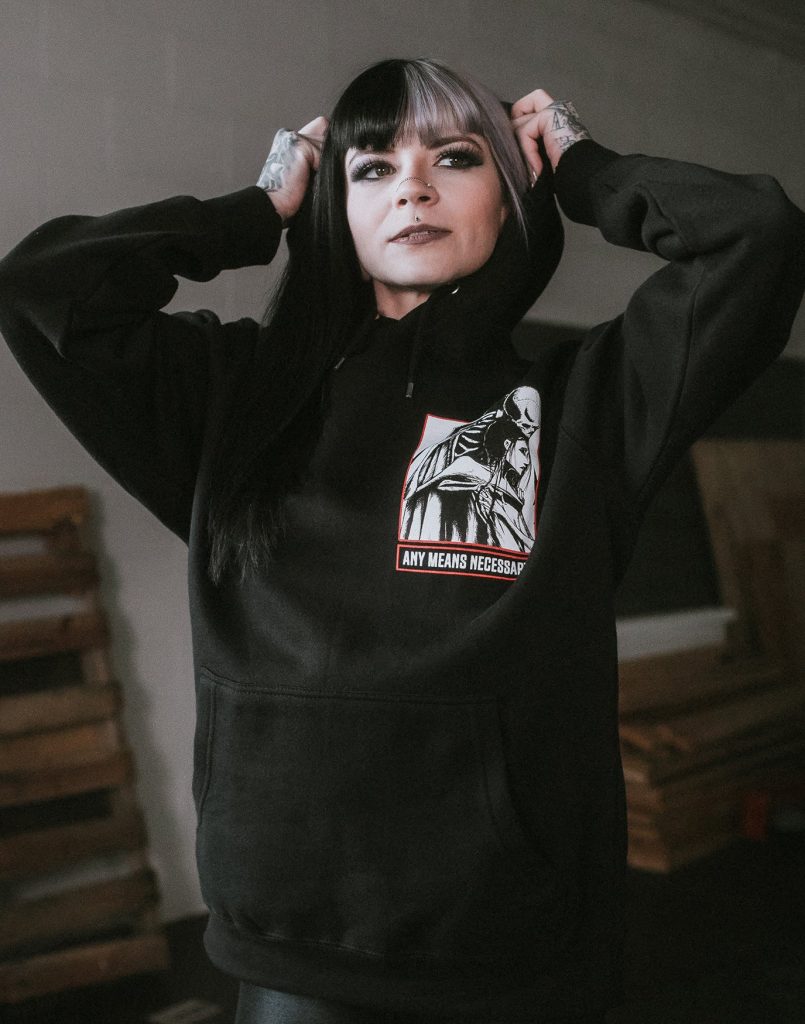Introduction
T-shirts are more than just a staple of casual wear; they are a medium for storytelling, personal branding, and creative artistry. Over the decades, the T-shirt has evolved from a functional piece of clothing to a cultural phenomenon, empowering individuals and groups to share messages, promote causes, and showcase their creativity. This article explores the role of T-shirts as a canvas for self-expression, their impact on art and design, the rise of custom T-shirt culture, and the future of wearable creativity.
T-Shirts: A Blank Slate for Expression
The Birth of Graphic T-Shirts
The modern graphic T-shirt was born in the mid-20th century, thanks to advancements in screen printing technology. Early adopters included brands and artists who recognized the T-shirt’s potential as a wearable billboard. Concert merchandise, political campaigns, and corporate advertising leveraged T-shirts to reach a wider audience. Over time, they became a way for individuals to display their identities, affiliations, and interests.
Personal and Collective Identity
From slogans that promote activism to band logos that declare musical tastes, T-shirts allow wearers to broadcast their individuality and align themselves with communities. For example, wearing a T-shirt with a favorite superhero or a beloved quote can spark conversations and foster connections.
The Evolution of Style
Initially seen as functional garments, T-shirts today reflect broader fashion trends. Oversized fits, cropped designs, and experimental cuts have transformed the T-shirt into a versatile fashion item. High-fashion brands have embraced the T-shirt, incorporating it into luxury collections and redefining its place in the fashion hierarchy.
The Artistic Evolution of T-Shirts
Collaborations Between Artists and Brands
In the late 20th century, collaborations between artists and fashion brands elevated T-shirts to an art form. Renowned artists like Andy Warhol used the T-shirt as a canvas, bridging the gap between high art and accessible fashion. Today, limited-edition releases featuring designs from contemporary artists are highly sought after, blurring the lines between clothing and collectible art.
The Role of Technology
Digital tools and techniques, such as Direct-to-Garment (DTG) printing, have revolutionized the design process. Artists can now create intricate, multi-colored designs without the constraints of traditional screen printing. Augmented reality (AR) and NFTs have also entered the realm of T-shirt design, allowing interactive and virtual layers of expression.
Global Influence
T-shirt design is not confined to a single culture or region. Designers worldwide bring unique aesthetics to the medium, from Japanese minimalist designs to vibrant African patterns. This global influence ensures that the T-shirt remains a dynamic platform for artistic exploration.
The Customization Movement
The Rise of Print-on-Demand Services
Platforms like Printful, Teespring, and Redbubble have democratized T-shirt design, enabling anyone with an idea to bring it to life. These services cater to entrepreneurs, artists, and hobbyists who want to create custom T-shirts without investing in inventory or equipment.
DIY Culture and Customization
The DIY ethos has embraced T-shirts as a medium, with tie-dye, hand-painting, and patchwork becoming popular methods of personalization. Workshops and online tutorials encourage creativity, making custom T-shirts a fun and accessible project for all ages.
Personalization as a Trend
Customization has become a dominant trend in fashion, allowing consumers to create items that reflect their personality. Personalized T-shirts with unique graphics, names, or even photos are increasingly popular as gifts and personal keepsakes.
T-Shirts in Social and Political Movements
Amplifying Voices
From the Civil Rights Movement to modern-day climate protests, T-shirts have played a significant role in amplifying voices. A simple slogan on a T-shirt can carry powerful messages, making complex issues accessible and memorable.
Viral Campaigns
Social media has enhanced the reach of T-shirt campaigns. For instance, hashtags and online challenges often feature custom T-shirts to raise awareness or funds for causes. These campaigns turn wearers into ambassadors, spreading messages far beyond their immediate circles.
Historical Significance
Throughout history, T-shirts have been used as tools for resistance and change. Protest movements have utilized bold designs to make statements, and these garments often become symbols of the era, preserved in museums and archives.
Sustainability in Creative T-Shirts
Upcycling and Eco-Friendly Designs
As concerns about environmental impact grow, many artists and brands are turning to sustainable practices. Upcycled materials, water-based inks, and biodegradable fabrics are becoming standard in eco-conscious T-shirt design.
Supporting Local Artisans
Fair trade initiatives and collaborations with local artisans provide ethical alternatives to mass production. These efforts ensure that creativity thrives while supporting communities and reducing environmental harm.
Consumer Awareness
As consumers become more aware of the environmental impact of their purchases, demand for sustainable T-shirts is rising. Brands are responding by offering transparency about their sourcing and production processes.
The Future of T-Shirts as Art
Interactive and Smart T-Shirts
Advancements in wearable technology are transforming T-shirts into dynamic pieces of art. LED displays, temperature-sensitive fabrics, and QR codes allow wearers to change designs or link to digital content, creating interactive experiences.
Virtual Fashion and Digital Collectibles
With the rise of virtual reality and the metaverse, digital T-shirts are becoming a new frontier. Users can purchase and wear virtual designs in gaming environments or social platforms, showcasing their style in entirely new dimensions.
Expanding Accessibility
The future of T-shirt design lies in making high-quality, artistic designs accessible to all. Innovations in printing and distribution will ensure that creativity remains within reach, regardless of geographic or economic barriers.
Conclusion
T-shirts have evolved far beyond their utilitarian roots to become one of the most versatile platforms for creativity and expression. As technology and sustainability reshape the landscape, the possibilities for innovation are endless. Whether as a personal statement, a work of art, or a tool for social change, the humble T-shirt continues to prove its extraordinary potential as a canvas for the imagination. From global fashion runways to grassroots movements, the story of the T-shirt is an ever-expanding narrative that celebrates individuality, creativity, and connection.


